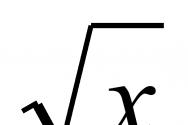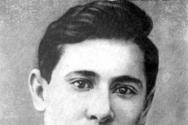Методическая разработка занятия по английскому языку на тему "Машины и работа" (3 курс). Методическая разработка занятия по английскому языку на тему "Машины и работа" (3 курс) Размышляя topic simple machines
Or . However, some of the most important and useful machines are quite simple. In fact, scientists even call them simple machines!
So what is a simple machine? Is it a machine that does a simple , such as addition or ? Maybe it"s just a machine that"s really easy to operate, like an old television remote control? Or could it be any machine that makes life easier?
While simple machines do make our lives easier, they"re much older than either television remotes or calculators. Simple machines are some of the first machines ever created.
Since the earliest human beings walked on Earth, they looked for ways to make the of everyday life easier to accomplish. Over time, they did this by inventing what has become known as the six simple machines.
Wedges are moving inclined planes used to lift or separate. Wedges are usually used to cut, tear, or break an object into pieces. Common wedges include knives, axes, saws, scissors, and shovels. However, wedges can also be used to hold things in place, such as in the case of staples, nails, shims, or doorstops.
A is a twisted version of an inclined plane. It allows movement to be translated into an up or down motion that takes up less space. Screws can also help hold things together. Common examples of screws include jar lids, drills, light bulbs, and bottle caps.
These six simple machines are all around us. Often more machines, also called machines, consist of one or more of the simple machines put together. Can you imagine how much easier life became after the invention of these simple machines?
М.В. Рудакова (г.Иркутск)
Методическая разработка занятия по теме «Machines and Work» (Машины и работа)
Аннотация
Данное занятие проводится при изучении темы: «Машины и работа» со студентами III курса (1 семестр) по специальности 110809 «Механизация сельского хозяйства ». Занятие разработано по учебнику Бгашев В.Н., Долматовская Е.Ю. Английский язык для студентов машиностроительных специальностей. Студенты уже прошли базовый этап подготовки по дисциплине, и уже достаточно владеют лексическим и грамматическим материалом для изучения программы английского языка профессиональной направленности. Занятие предназначается для продвинутого этапа подготовки по английскому языку и обеспечивает коммуникативную профессиональную направленность обучения. По данной теме студенты уже изучили основной лексический и грамматический материал, поэтому тип занятия - систематизация и обобщение знаний . Все этапы занятия построены на единых методических принципах, развивают основные виды иноязычной речевой деятельности, формируют межкультурные компетенции будущих специалистов. На занятии используется технология коммуникативного обучения и технология обучения в сотрудничестве, а также технология критического мышления. Для реализации поставленной цели применяются познавательные методы мотивации, волевые методы (самооценка и коррекция, рефлексия поведения), а также метод мозгового штурма. На этапе построения проекта студентам предлагается использовать, как прием, ментальную карту (Mind Map). Особое внимание было уделено изучению лексического аспекта, так как обучающийся должен уметь переводить тексты профессиональной направленности, общаться на профессиональные темы; самостоятельно совершенствовать и пополнять словарный запас.
Все этапы занятия способствуют развитию речевой, языковой и профессиональной компетенции и достижению поставленных воспитательных и образовательных целей. Предметом оценки служат умения и знания, предусмотренные ФГОС по дисциплине Английский язык , направленные на формирование общих и профессиональных компетенций.
Тема занятия: «Machines and Work» (Машины и работа)
Цель занятия: создать условия для развитиякоммуникативной компетенции.
Задачи занятия: образовательная: формировать лексические навыки говорения, развивать умения смыслового чтения (просмотровое, поисковое, изучающее); развивающая: развивать память, внимание, мышление, логическое мышление и языковую догадку, учить анализировать, обобщать, группировать); воспитательная; воспитывать познавательный интерес в изучении иностранного языка, формировать навыки групповой работы.
Формируемые компетенции: ОК 1. Понимать сущность и социальную значимость своей будущей профессии, проявлять к ней устойчивый интерес.
ОК 3. Принимать решения в стандартных и нестандартных ситуациях и нести за них ответственность.
ОК 4. Осуществлять поиск и использование информации, необходимой для эффективного выполнения профессиональных задач, профессионального и личностного развития.
ОК 5. Владеть информационной культурой, анализировать и оценивать информацию с использованием информационно-коммуникационных технологий.
ОК 6. Работать в коллективе и команде, эффективно общаться с коллегами, руководством, потребителями.
Тип занятия: систематизация и обобщение знаний.
Межпредметные связи: русский язык, физика, механика, машины, механизмы.
Оборудование занятия: учебник, проектор, компьютер, экран, презентация, раздаточный материал, листы ватмана, фломастеры, магниты.
Формы работы: индивидуальная, групповая, фронтальная
Этапы занятия. Формы работы
Содержание занятия. Возможные методы и приемы выполнения
Основные виды учебной деятельности
УУД, формирующиеся на данном этапе
Деятельность учителя
Деятельность обучающихся
Этап мотивации учебной деятельности
Организационный момент
(2 мин.)
T. Good morning, students! I`m glad to see you. It is really fine day today, isn’t it? How are you today? What about the weather today? Is it fine? Let`s start our lesson.
Учитель приветствует студентов, проверяет их готовность к занятию.
Студенты включаются в иноязычное общение, реагируя на реплики учителя, согласно коммуникативной задаче.
Личностные: адекватная мотивация учебной деятельности; формирование мотивации к изучению иностранного языка; формирование положительного отношения к занятию иностранного языка.
Регулятивные: самооценка готовности к уроку.
Коммуникативные: слушать и реагировать на реплику адекватно речевой ситуации.
Лексико-фонетическая зарядка
(7 мин.)
Electricity, effort, motion, distance, rate, weight, horsepower, watt, kilowatt, force, work wind, water, steam, petroleum, prime mover, windmill, turbine, generator, steam engine, internal combustion engine, electric motor
Учитель предлагает студентам проговаривать слова для развития произносительных навыков.
Студенты проговаривают слова, которые в дальнейшем они смогут использовать в своей речи, работают над произношением. Соотносят графический и звуковой образ английских слов.
Регулятивные: осуществлять самоконтроль правильности произношения.
Познавательные: извлекать необходимую информацию из прослушанного.
Речевое погружение
(7 мин.)
Т . Thank you! Great! Now, students look at the screen, here you can see the car. Let`s try to name the parts of this car and describe them using the model: This is/these are… . N+ is/are made of…
For example: this is a windscreen. The windscreen is made of glass. ( Приложение 1 )
Учитель организует погружение в иноязычную среду, закрепляет навыки употребления знакомых лексических единиц и грамматической модели.
Студенты, используя ранее изученные лексические единицы, описывают автомобиль, называя части автомобиля и материалы, из которых они сделаны.
Коммуникативные: слушать и осознанно воспринимать речь других студентов, осуществлять корректировку неправильных ответов.
Ознакомление с темой занятия, сообщение целей
(2 мин.)
Т . Students, as you know a machine is a device that transmits and changes force or motion into work. A machine can be very simple or very complex. Terms like work, force, and power are closely connected with machines. I think you`ll try to guess what our lesson will be about. Well, what shall we do today? Yes, you`re right, we`ll speak about machines and work. We must give the definitions of the words - work, force, power and connect them with «work» and «machines». Is the topic interesting for you?
Учитель дает возможность студентам самостоятельно определить тему занятия, цели и что для этого необходимо.
Студенты самостоятельно определяют тему и цели занятия с помощью опорной лексики.
Познавательные: уметь адекватно, осознанно и произвольно строить речевое высказывание в устной речи.
Регулятивные: определять цель учебной деятельности с помощью учителя; планировать свои действия для реализации задач.
II .Этап актуализации опорных знаний
Лексическая работа
(10 мин.)
T. 1) To begin with I propose you to divide the following words into three groups, those which describe: 1)basic terms of physics and mechanics; 2)energy sources; 3)mechanisms, machines. ( Приложение 2)
2) The following verbs are often related with basic terms of physics and mechanics. Now, students try to make up word combinations using these verbs: to produce, to transform, to supply, to result in, to exert, to set, to perform, to result from, to measure…in. Model: to transmit motion/force ( Приложение 2)
Учитель активизирует знакомую лексику, корректирует ответы студентов по необходимости.
Студенты самостоятельно выполняют задания, используя ранее изученные лексические единицы. Свои ответы заносят в таблицу. Проверка и коррекция выполненного задания.
Коммуникативные: осознанное построение речевых высказываний, рефлексия.
Регулятивные: исследование условий учебной задачи, обсуждение способов решения.
Познавательные: аргументация своей точки зрения.
Говорение, предугадывание
(4 мин.)
T. Look at the screen, here you can see the terms. The task is to match each one with its correct definition.
(Приложение 3)
Учитель проверяет правильность выполнения задания.
Студенты подбирают к каждому термину соответствующее ему определение.
Логические:
Познавательные: уметь анализировать информацию.
III . Этап самостоятельной работы с самопроверкой по образцу
Смысловоечтение
(14 мин.)
T. Well done. Let`s continue our lesson. Read the text “Machines and work”, try to focus on its essential facts, and choose the most suitable heading below for each paragraph: 1) Prime movers 2) Definition of “machine” 3) The relationship between «work» and «force» 4) Power and its measures.
You also should find the definitions of basic terms connected with «machines» and «work». Text A is on page 192 .
Учитель информирует обучающихся об алгоритме работы над чтением.
Студенты читают текст с пониманием основного содержания, подбирают заголовки к абзацам и находят определения основным понятиям, связанными с «работой» и «машинами».
Логические: развивать умения сосредоточить внимание, догадку и логику.
Регулятивные: совершенствовать навыки смыслового чтения, используя лексику урока.
Познавательные: развивать смысловое чтение; осуществлять поиск и выделение необходимой информации; уметь структурировать знания.
Самопроверка и самооценка
(5 мин.)
T. Time is running. Let`s check your tasks.
Учитель контролирует, как студенты аргументируют свою точку зрения, корректирует их ответы.
Студенты обсуждают прочитанный текст, дают определения основным понятиям, связанными с «работой» и «машинами».
Регулятивные: уметь правильно оценивать результаты своей работы и одногруппников.
Коммуникативные: уметь слушать друг друга для восприятия необходимых сведений и поддерживания беседы.
Говорение. Работа в группах
(12 мин.)
T. Well, let`s go on. Now, students, we`ll have a group work. I will give you some questions about the text and you should answer them. ( Приложение 4)
Учитель делит студентов на две группы и дает вопросы для обсуждения.
Студенты делятся на две группы и вытягивают вопросы по прочитанному тексту. Обсуждают вопросы и ответы на них. Используют готовые речевые материалы для оформления ответов.
Коммуникативные: участвовать в работе группы, осуществлять взаимоконтроль и взаимопомощь; проявлять активность во взаимодействии для решения общих задач.
Познавательные: уметь сопоставлять и отбирать информацию из текста, осознанно строить речевое высказывание в устной форме.
Личностные: формировать навыки сотрудничества, проявлять инициативу.
IV. Этап построения проекта
Чтение с целью извлечения специальной информации (работа в группах)
(15 мин.)
T. Students, your task is to give a short report about «Machine, Work, Power».
Учитель ставит задачу перед группами приготовить сообщение «Машина, работа, сила» с использованием активного словаря, который был составлен во время лексической работы на этапе актуализации опорных знаний. Учитель предлагает студентам лист ватмана для оформления своего сообщения.
Студенты составляют ментальную карту, используя информацию из текста и таблицу (Приложение 2), распределяют, кто и о чем будет говорить.
Коммуникативные: участие в работе группы: распределение обязанностей, планирование своей части работы, осуществление взаимоконтроля, взаимопомощь; оформление своих мыслей с учетом учебной задачи.
Познавательные: умение анализировать, группировать факты, строить логические рассуждения; умение выделять главные факты, опуская второстепенные.
Личностные: проявлять инициативу и самостоятельность, стремиться к совершенствованию собственной речевой культуры.
Регулятивные: принимать и сохранять учебную задачу, сравнивать результаты соей работы с результатами других.
V . Этап проверки реализации построенного проекта
Проверка проекта
(8 мин.)
T. So, it`s time to begin to represent your projects.
Учитель определяет уровень усвоения необходимых знаний.
Студенты рассказывают об основных понятиях физики и механики, механизмах и источниках энергии и показывают их взаимосвязь с машинами и работой. Свои сообщения сопровождают демонстрацией проекта на листе ватмана (Mind Map).
Познавательные: умение осознанно строить речевое высказывание в устной форме, совершенствовать речевые навыки.
Коммуникативные: формировать собственное мнение и позицию; аргументировать свою точку зрения; участвовать в работе группы.
IV . Этап рефлексии учебной деятельности на занятии
Подведение итогов работы
(1,5 мин.)
T. Now we come to the end of the lesson. Do you remember the topic? What did we study today? What was new for you? Let’s review the new vocabularies in chain.
Учитель задает вопросы. Выставляет оценки за занятие, комментирует, мотивирует на дальнейшую успешную работу.
Студенты отвечают на вопросы учителя и высказывают свое мнение.
Регулятивные: умение контролировать свою деятельность по результатам, умение адекватно понимать оценку учителя, одногруппников.
Личностные: умение оценивать свою деятельность; проявлять стремление к совершенствованию собственной речевой культуры в целом.
Рефлексия
(1,5 мин.)
T. Do you like our lesson? Are you in a good mood at the end of the lesson? Do you like your work today?
Учитель приглашает студентов высказать свое мнение об уроке.
Студенты строят высказывания, выражающие мнение, отвечают на вопросы на учителя. Осваивают формы личностной рефлексии. (Приложение5)
Домашнеезадание
(1 мин.)
T. Your homework is the ex.26, p.203. You should fill the table.
Учитель объясняет, что надо сделать в процессе домашнего задания.
Студенты записывают домашнее задание.
Выводы
Занятие английского языка на III курсе по теме «Machines and Work» (Машины и работа) является занятием систематизации и обобщения знаний по данной теме.
На этапе организационного момента учитель создает общий положительный настрой на предстоящее занятие, помогает обучающимся организовать собственное учебное пространство. На данном занятии реализуются принципы личностно-ориентированного, развивающего обучения, осуществляется самооценка и взаимооценка обучающимися. Деятельность учителя в большей степени представлена в виде организации работы и помощи обучающимся в различных учебных ситуациях.
На основных этапах занятия используется системно-деятельностный и коммуникативный подходы. При подведении итогов и рефлексии предусмотрено обсуждение деятельности студентов на уроке, само- и взаимооценивание результатов работы, посредством чего обучающиеся овладевают навыками анализа, оценки своей работы и других, умением участвовать в диалоге, уважительно высказываться о деятельности других.
В ходе занятия (наряду с учебными) решались и жизненно-практические задачи, использовался жизненный опыт обучающихся с целью развития их познавательной активности, самостоятельности.
Список использованной литературы
Бгашев В.Н., Долматовская Е.Ю. Английский язык для студентов машиностроительных специальностей. М.: Астрель АСТ, 2013. 381 с.
Дубинина В.Г . Personality (Личность)//Английский язык. Все для учителя. 2014. №1. С.14-20.
Интернет-ресурсы - Википедия. свободная энциклопедия.
Чернухина А.Е. Англо-русский технический словарь. М.:ОНИКС, 1997. 1026 с.
Приложение 1
Let`s try to name the parts of this car and describe them using the model: This is/these are… . N+ is/are made of…
For example: this is a windscreen. The windscreen is made of glass
Bonnet – капот
Wing mirror – боковое зеркало
Windscreen – лобовое стекло
Rear-view mirror – зеркало заднего вида
Windscreen wiper – «дворник»
Door – дверь
Boot – багажник
Tyre – шина
Wheel – колесо
Headlight – фара
Bumper – бампер
Licence plate – номерной знак
Indicator – указатель поворота
Приложение 2
1) Divide the following words into three groups, those which describe: 1)basic terms of physics and mechanics; 2)energy sources;
3)mechanisms, machines:
Electricity, effort, motion, distance, rate, weight, horsepower, watt, kilowatt, force, work wind, water, steam,
petroleum, prime mover, windmill, turbine, generator, steam engine, internal combustion engine, electric motor
2) The following verbs are often related with basic terms of physics and mechanics. Try to make up word combinations using these verbs: to produce, to transform, to supply, to result in, to exert, to set, to perform, to result from, to measure…in. Model: to transmit motion/force.
Active vocabulary
application
Nouns and combinations with the nouns
Verb combinations
1. Basic terms of physics and mechanics
electricity
effort
motion
distance
rate
weight
horsepower
watt
kilowatt
force
work
to produce electricity
to exert effort
to set in motion
to result in motion
to hold up the weight
to exert force
to produce work
to perform work
to result from
2. Energy sources
wind
water
steam
petroleum
3. Mechanisms and machines
Prime mover
windmill
turbine
generator
steam engine
internal combustion engine
electric motor
Приложение 3
Match the term with its correct definition:
Machine
the rate at which work is performed.
Prime mover
a device that uses force to accomplish something.
Force
an effort that results in motion or physical change.
Work
a machine whose input is natural source of energy.
Power
a combination of the force and the distance through which it is exerted.
Приложение 4
Questions for the first group:
What is a simple definition of a machine? What is more technical
definition? What does this definition imply?
Describe some very simple machines. Name some complex machines.
What do we call machines whose is a natural source of energy? What natural
sources of energy do you know and what machines use them?
Why aren`t electric motors prime movers?
Questions for the second group:
What is force? Give some examples of force.
What is work? How can work be expressed mathematically?
Give an example.
What is power?
How is the rate of doing work usually given in the English-
Speaking countries? Why was the term invented?
In what terms is power measured in the metric system?
Приложение 5

Simple machines can be used to make work easier and faster. Compound machines are basically simple machines placed together to work together. Work is force acting on an object that moves it a distance (W=F*d). A simple machine must have some force applied to it to do work. Simple machines let us use a small force to beat bigger forces. They can also change the direction of the force. Keep in mind that a simple machine cannot create energy (F input * d input = F output * d output). If you want the force output to be big and distance output to be small, you need to have a big distance input and a small force input. If you want the force output to be small and the distance output to be large, then the force input needs to be large and the distance input to be small (Fd = Fd). There are three simple machines will be focus on for this project: lever, pulley, and wheel and axle. .
The lever is used in seesaws, shovels, hammers, and other everyday objects. A lever consists of three main parts: the fulcrum, rod, and the load the machine is acting on it. The fulcrum, or fixed point, allows the rod to move up and down freely. There are three classes of levers, but for this project a will be using the second-class lever. This lever allows us to use less force to act on the load. In other words, less force and more distance will be inputted to result in more force and less distance. This kind of lever in usually used to move heavy objects. The fulcrum is closer to the load to achieve this. This simple machine will probably be the best to lift the soda can. Most of the lever can be built out of wood. The fulcrum may be made out of metal or wood. .
The pulley is used in cranes. Pulleys usually lift the load. A pulley changes the direction in the force to do that. A pulley is used to change the direction of the force. It can also multiply forces depending on the type. In this project a type one and two pulley will be used.
Essays Related to Simple Machines
1.
Technology and machines have become more advanced we have grown accustomed to having machines such as computers and cars in our everyday lives. Our own machines will soon surpass our own intelligence. ... Machines have played a vital role in our lives. ... When they were first created a computer that had the power of one of today"s simple five dollar calculators required so much space to hold all of their necessary equipment it could take up a whole room, but the simple machine known today can be made so small it can not even be handled by a human due to its s...
- Word Count: 1272
- Approx Pages: 5
- Grade Level: High School
2.
AI is the attempt to make machines, specifically computers, perform intelligently through programming. ... It could be said that the human brain is nothing more than a machine, and as we know it to be capable of thought it would be fair to surmise that therefore machines can think and it is probably this, or a similar premise that inspired AI. ... This argument is an attempt to demonstrate that although a computer program appears to be understanding a story, it is merely obeying simple instructions, and has no understanding at all. ... But what are these natural causal properties, and from ...
- Word Count: 1323
- Approx Pages: 5
- Has Bibliography
3.
In The Time Machine by H.G Wells, Wells portrays the future to an exact detail. ... The Eloi are simple and beautiful creatures, but the Time Traveler thinks of them as weak and lazy. ... Through the Time Machine Wells warns that mankind will come to end if capitalism continues. ... Social Darwinism and evolution are presented throughout the Time Machine. ... Well"s uses the Time Machine to project what he believes the future will be. ...
- Word Count: 1454
- Approx Pages: 6
- Grade Level: High School
4.
Rage Against The Machine At first thought a band standing on stage naked for 15 minutes without saying a word or playing a single note might seem lewd, but after finding that they were silently protesting censorship one might think differently of them. Rage Against the Machine (RATM) is probably one of the most atypical bands that one could ever find. ... Believe it or not there are bands who care less about money and more about issues and Rage Against the Machine is one of them. ... The majority of their songs were primarily written as activist poetry by Zack de la Rocha (lead singer ...
- Word Count: 519
- Approx Pages: 2
5.
ABSTRACT Complex system theory in animals and machines is well developed and a basic synopsis is provided. ... These ideas have been applied in the field of Engineering to develop machines for controlling states of objects or events: a simple temperature control system is used as a model. ... This process, is the modern basis of the modern theory regarding the evolution of life, which in simple terms can be described as the process of prolonging a type of structure through; duplication, reproduction or other processes. ... A basic comparison of control systems in nature and machines can b...
- Word Count: 908
- Approx Pages: 4
- Has Bibliography
- Grade Level: Undergraduate
6.
Personally thinking, technology makes people"s life simpler than making people"s lives more complicated because newly developed devices, improvement of living condition and efficient transportation. ... All of those technologies can help people get a simpler and easier lives. ... Thus, technology has more benefits can be discovered, and it make lives simpler rather than more complicated. In conclusion, although technology may be a little bit complicated, when we count it use on machines, communication, information, and transportation, it is more pure and effortless for our lives. ...
- Word Count: 787
- Approx Pages: 3
- Has Bibliography
- Grade Level: Undergraduate
7.
A simple distinction between both groups is that humans depend on organization where as animals do not. The Time Machine by H.G. ... Unlike the Eloi, the Morlocks have a curiosity for knowledge which is why they take the time machine. ... When the time machine is returned to him, he notices that it is very clean and well oiled. ... Wells illustrates this quite well in The Time Machine. ...
For starters, allow me to introduce the major hole in English linguistics terminology. And these three example sentences will help me:
- A cat chases a dog
- To think is human
- She ate her breakfast
Now a question: how do you refer to the syntactic role that the highlighted words occupy in the sentences? Or else: how do you refer to the slot between subject and object that ties the two together?
The answer: there is no unambiguous word in English to refer to it.
Usually, linguists resort to one of two options:
A) We could call it a verb . That’s how it’s called in language typology: in SVO structure, for example, the letters stand for “subject-verb-object”.
The problem is, though, that ‘verb’ is already a name for a word class. Word classes (e.g. , ‘noun’, ‘adjective’, ‘adverb’) are word categories by their morphology (common word endings) and syntactic roles that they could take. While syntactic roles (e.g. , ‘subject’, ‘object’, ‘attribute’) are particular slots in a sentence that don’t exist outside of a sentence.
Just because the word class of a verb tends to occupy the syntactic role in question doesn’t mean that the two are the same. And to illustrate it, please go back to the second example sentence. Is ‘to think’ a verb, but suddenly… not a verb?
So, when people say that they’ve just invented a verbless language, you could guess all you want what they mean. Is it like:
- “My language has usual rigid syntax like in English, German or Japanese - but there are no word classes.”
Or do they mean:
- “My language has completely alien syntax. It doesn’t rely on SVO or similar pattern, and has no subjects or objects as well.”
B) We could also call it a predicate . However, not only this term has nothing to do with the syntactic slot in question - it has nothing to do with linguistics at all .
It’s a term from logic.
Any statement, be it a sentence in whatever language or some logical formula, has a predicate structure: meaning that in every statement, there’s something that we make a statement about (a logical subject), and the actual statement about the subject (a predicate).
Linguists have adopted the term to refer to the syntactic slot between S and O - but technically, predicate isn’t that. In a sentence:
- Helen is a sophomore student from Stanford .
the entire highlighted part is a predicate. The sentence is a statement about Helen (hence, she’s a subject). The rest of the sentence is new information about her that we state - a predicate. If you’re familiar with programming, we’ve kinda applied a function: Helen is our variable to modify, and the statement is the actual function that changes the properties of the variable.
Now, for you to understand the point better, let’s break the default logical structure of the sentence with a dialogue:
Joe: “Tell me something interesting about Stanford!”
Moe: “Well, Helen is a sophomore student from Stanford.”
Now suddenly, Stanford is a logical subject. Firstly, Joe sets the subject for discussion, and then, Moe makes a statement about it: that Helen studies there. The university is what we’re interested in, while Helen is now part of the logical predicate.
Obviously, the sentence structure doesn’t agree with it: Helen is the syntactic subject in the sentence, and you don’t change that without shuffling the actual words around. But the dialogue has certain logical composition nonetheless, which doesn’t give a damn about the words or the language. Logic is sort-of above languages, and searching for predicate is not about cracking your head over syntax: you have to analyse the actual meaning of the statement made by a sentence.
This is why I am a strong proponent of introducing a new, separate word for “V” syntactic slot. Personally, I prefer to call it verbicate (good thing that it keeps the ‘V’ letter in SVO). So here’s another exotic option for you:
C) Call it a verbicate - be unambiguous.
Now that the prelude is over - back to your actual question.
If by “a language without predicate ” you mean “a language without verbicate ”, then absolutely yes . I’ve already covered this in , so I won’t be repeating. But in short: verbicate-based syntax is just one type of syntax that by no means is the only possible. It has proven itself to be effective (no kidding - ten thousand years of being virtually the exclusive type of syntax in natural human languages), and yet syntax could be anything. There probably are millions of ways to build a sentence, and what you’re after has been done repeatedly by many conlangers.
If by “predicate” you mean the actual predicate, then it’s kinda yes/no answer:
Yes , a language can be without predicates, because no language has predicates. It’s not a property or part of languages at all, and you can’t use linguistical methods to study or look for predicates. Just because a language is a tool to convey predicated statements doesn’t mean that the tool must inherit the property of the tooled.
No , a language cannot be spoken without predicates. Regardless of how grotesque or alien a language is, communication is still communication: the exchange of statements between interlocutors. When you speak, you convey information about something, meaning that every statement regardless of language can be broken down into a logical subject and what’s being stated about it.
In some languages, the grammar might more-or-less align with logical predicate structure; in other languages, it may not at all. But the statements remain the statements. Even if you ditched languages and used pictures to communicate - you still would be making statements, and thus use predicates.
Damn, even when my cat meows for food, she makes a statement that has a subject and a predicate.
To sum up , your question is roughly the same as “can a language exist without time? ”: before you ask, make sure you’re talking about tense , because time is kinda out of languages’ scope.
| After exploring some or all of the websites below, complete one or more of these activities: Investigate Wheels with Your Bicycle. Go to PBS Teachersource"s website and use your bicycle to learn about the wheel. Find Out How Stuff Works. Check out How Stuff Works . Look for a device that uses a simple machine as part of how it works. Create a poster showing how it works. Gear Up with a Tricycle & Bicycle. Visit PBS Teachersource"s site and follow the procedures there to learn a lot more about gears. Complete a Simple Machines WebQuest. Follow or adapt the procedures found at one of these webQuest sites: 1) Exploring Simple Machines by Paula Markowitz (Grade 4) http://www.lakelandschools.org/EDTECH/Machines/Machines.htm 2) Simple Machines http://www.eng.iastate.edu/twt/Course/packet/labs/wheels&leverLab.htm 3) Simple Machines WebQuest (Grade 4-6) http://www.plainfield.k12.in.us/hschool/webq/webq8/jjquest.htm 4) Simple Machines http://www.beth.k12.pa.us/schools/wwwclass/mcosgrove/simple.htm 5) Simple Machines Webquest http://www.jsd.k12.ak.us/ab/el/simplemachines.html Complete an Online Simple Machines Activity. Learn more about simple machines by following the directions at A Time for Simple Machines . You may also want to test your knowledge at Gadget Anatomy . Complete Some Simple Machine Experiments. Find lots of experiments at sites like Marvelous Machines and Motion, Energy and Simple Machines . |







